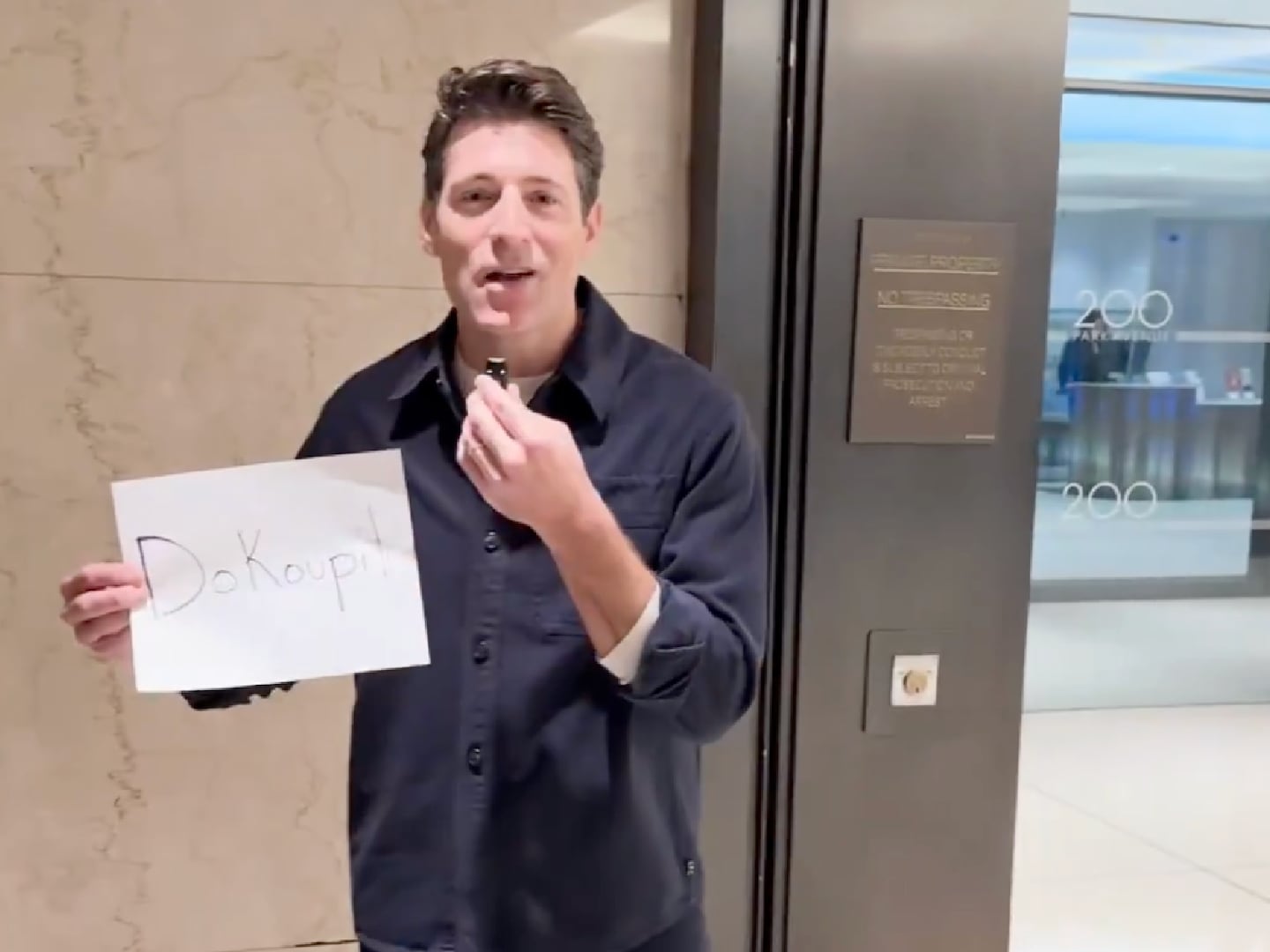On Jan. 23, Russian military officials held a press conference showing off what they said was a cruise missile at the center of a years-long arms control controversy between Washington and Moscow.
Except the presentation was essentially a hoax, according to a classified briefing prepared by U.S. intelligence. Neither the missile, nor its launch vehicle, nor the accompanying schematics were what Russia claimed them to be.
The alleged Russian misdirection came just days before the United States announced that it would withdraw from the 1987 Intermediate-Range Nuclear Forces Treaty—the treaty that Russia violated, in the U.S. view.
Almost nothing Russia showed off to support its claims at that press conference had anything to do with the missile the U.S. is most interested in, according to an assessment briefing put together by the Central Intelligence Agency and the National Geospatial Intelligence Agency.
Earlier this month, those two U.S. intelligence agencies determined that the cruise missile canisters and launch vehicle the Russian Ministry of Defense publicly showed at the briefing were not related to the missile that the United States has argued since 2014 violates the 1987 treaty, The Daily Beast has learned.
According to two U.S. government sources with knowledge of the American assessment of that Russian press conference, the treaty-violating missile is larger than the canister shown publicly by the Russian Ministry of Defense and uses a separate launch vehicle.
At the press conference, the Russian Ministry of Defense argued that the missile that the United States had said violated the treaty was simply a variant of an existing cruise missile known as the 9M728 with improved guidance. The official Russian claim was that the missile had a range that was actually 10 kilometers shorter than the older missile, due to an expanded electronics section that added mass over the older version.
To support these claims, the Ministry of Defense showed reporters what it claimed were the schematics of the two missiles, too. But the schematic of the 9M729 was not of the actual missile, according to the U.S. assessment. Alongside the schematics, reporters were also shown and allowed to freely film and photograph a cruise missile launch tube and the vehicle meant to carry and launcher the missile. No actual missile was shown publicly, however.
The launch vehicle that was shown, too, was not of a kind that is compatible with the 9M729, a U.S. government source told The Daily Beast.
Beginning in 2014, the U.S. government has publicly alleged that Russia violated the 1987 arms control agreement, which saw the United States and the Soviet Union agree to destroy their existing arsenals of ground-launched cruise and ballistic missiles with ranges between 500 km and 5,500 km and forswear the testing, production, or deployment of such missiles indefinitely.
Beginning in the early 2000s, Russia developed the 9M729, known to the U.S. intelligence community as the SSC-8, which Washington argues violates the treaty. Five years after the Obama administration first alleged that Russia had violated the treaty, the Trump administration announced that it would withdraw from it earlier this month.
“We cannot be the only country in the world unilaterally bound by this treaty, or any other,” President Donald Trump said in a statement released on Feb. 1. “We will move forward with developing our own military response options and will work with NATO and our other allies and partners to deny Russia any military advantage from its unlawful conduct.” Shortly thereafter, U.S. Secretary of State Mike Pompeo announced that the United States would withdraw, activating a 180-day withdrawal mechanism provided for by the treaty.
The joint CIA and NGA assessment on Russia’s violation “reiterated that six tests exceeded 500 km,“ one source told The Daily Beast. That meant Russia had demonstrated that its missiles could fly to ranges prohibited by the treaty. The longest test of the six saw the missile fly to a range of 2,070 km. The United States assesses the SSC-8 to be a road-mobile variant of the Kalibr sea-launched cruise missile, with a range capability of 2,000 km when armed with a conventional payload and a 2,350-km range capability in its nuclear variant, a source told The Daily Beast.
The missile was tested at least six times to treaty-violating ranges. In a public statement in November 2018, U.S. Director of National Intelligence Dan Coats clarified that Russia had never tested the missile to treaty-violating ranges from a road-mobile launcher. He noted that Russia had by 2015 “completed a comprehensive flight test program consisting of multiple tests of the 9M729 missile from both fixed and mobile launchers.”
Per Coats’ explanation, the treaty does allow Russia and the United States to conduct land-based tests of missiles to the prohibited range, provided that the missile in question is intended to be deployed on an air- or sea-based platform. The Kalibr—the sea-launched cruise missile that the SSC-8 is derived from—was tested in this manner from a fixed launcher.
The SSC-8 too was tested in this way and then moved to a road-mobile launcher, where it was tested to ranges below 500 km, giving it the appearance of being compliant with the treaty. According to a source, the longest-range test of the SSC-8 from a road-mobile launcher was to 350 km. Through various technical means, U.S. intelligence agencies were nonetheless able to determine that Russia had prepared the missile that had been tested to treaty-violating ranges for use on a road-mobile launcher and in the process had violated the treaty.
Russia’s response to the U.S. decision to withdraw from the treaty was reciprocal, with Russian President Vladimir Putin noting that Moscow would “suspend it as well.” Putin also threatened to begin work on new missiles that would cover the range previously prohibited by the treaty. On Feb. 5, Russian Minister of Defense Sergei Shoigu confirmed that Moscow would begin development work on a land-based Kalibr missile—the very missile that the U.S. side argues already exists and violated the treaty in the first place.
Russia has not acknowledged U.S. accusations that it had violated the treaty and its January press conference was an attempt to transparently demonstrate that the SSC-8 was compliant with the treaty—except the SSC-8 was not shown. As of February 2019, Russia has four battalions of SSC-8 missiles deployed.
The United States will likely develop conventional ground-launched cruise missiles of its own after the treaty expires. Speaking in Brussels earlier this week, NATO Secretary-General Jens Stoltenberg noted that the alliance does not "have any intention to deploy new nuclear land-based weapon systems in Europe."







